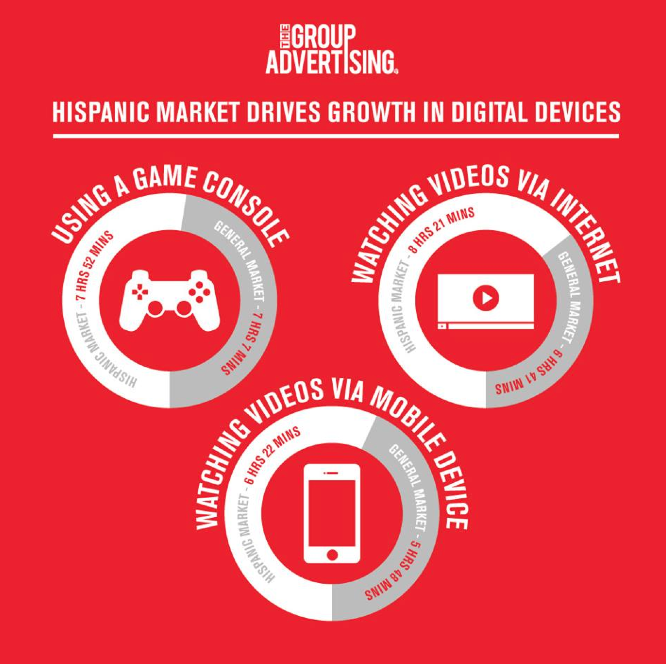Hispanics are growing at a fast pace and already that impact is significant. Their purchasing power is estimated to increase 50% by 2015 to $1.5 trillion dollars. And they are quickly becoming trendsetters in the digital world, as well—from device ownership to usage.
Smart devices have impacted our lives in countless ways. For example: the way we interact with people, how we ask for help or advice, how we stay connected with our community or create our perception of different brands. For many Hispanics, having the latest mobile technology is a reflection of their social status. It’s part of “Living the American Dream.”
Based on the latest Nielsen report “Digital vs Universal: How U.S. Hispanics are Driving Growth in Digital,” nearly 3 out of 4 Hispanics (72%) own a smart phone and about half of them (47%) are planning to upgrade or replace their mobile handset in the next 6 months, compared to just 30% of overall consumer market.
For many Hispanics, the smart phones or tablets are their first computer. Price, practicality, and usage play important role at time of purchase. It really does the job at a lower cost investment compared with a computer. You can surf on the web, buy products, read the news, look for products reviews, and stay connected with your family through email or social media outlets just with a tap. Besides that, you do not have to incur another Internet connection expense at home. So, the savings is crucial.
According to the report, Hispanics also spend more hours using their digital devices on average. Their usage data is 16% higher than average mobile consumer. Part of this higher usage comes from social media. As of July 2013, 23 million Hispanic smartphone owners used social media sites and apps.
It is also estimated that 68% of Latino Internet users use Facebook, Twitter or other social networking sites, according to the Pew Hispanic Center survey—compared to 58% of all U.S. Internet users.
Hispanic purchasing power is also reflecting on online purchases. Hispanics represent nearly 1 in 8 U.S. consumers that use their phones or tablets to shop.
If you really want to be successful in engaging Hispanics, you need to embrace and adapt to this trend. Even though your mass-market strategy may have served you well for decades, the general market is becoming more and more fragmented and less economically powerful. So, understanding how to sell your products and services to the emerging minorities group (Black, Asian & Hispanic) is becoming a business necessity. Minorities already represent over 40% of all consumers in America. An important question to ask yourself now is: are 40% of your sales coming from these markets?
